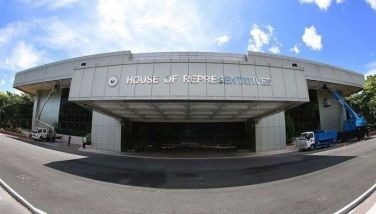Great strides needed to protect rice farming, says IRRI expert
February 17, 2002 | 12:00am
Between 1961 and 1991 – a period of three decades – Asia’s developing nation’s population more than doubled from 1.6 billion to 3.4 billion. Improved rice varieties took care of billions of additional mouths to feed. With 120-percent production upswing in ricefields that expanded by only 30 percent.
This information was taken by IRRI from data gathered by the United Nations Food and Agriculture Organization (FAO) which shows that research has achieved tremendous increases over the past 40 years. Benefited with reduced prices are the region’s multitude of poor people.
The research team also came up with revealing figures. Total annual gains from the planting of modern varieties now stands at approximately P540 billion. This is nearly 150 times the total investments in rice research over the same period by IRRI and its many partners.
Despite such achievements, Dr. Cantrell, director general of the International Rice Research Institute (IRRI) has only words of caution about the future of rice farming: "Many of the gains of the first phase of the green revolution in the 1960s and ’70s were achieved via an increase in inputs."
According to the director general, the gains in production over the past two decades have been achieved very much in the context of sustainable, more environmentally sensitive rice farming. At IRRI’s main experimental farm, they have reduced pesticide use by 60 percent and recent research projects in Vietnam and China have had an impressive impact on pesticide use in these major rice-producing countries.
Dr. Cantrell has good words for Filipino farmers: "They recorded lower levels of pesticide use than other rice growers in Asia while achieving Asia’s highest yields."
In the face of this creditable production performance nothing much has changed for the poor Asian farmers as other challenges still remains. "Grinding poverty still blights the lives of millions of rice farmers and consumers right across Asia, he said. "It troubles us deeply that despite 40 years of effort at IRRI, poverty remains such a huge problem in rice production.
Great strides have to be achieved to protect rice farming. "The world’s rice growing regions should be seen as unique ecological regions no less precious than forests and oceans." This is especially so, he explains further "as rice covers about 11 percent of the Earth’s arable land surface making rice growing the largest single user of land dedicated to feed the world." – PAJ News & Features
This information was taken by IRRI from data gathered by the United Nations Food and Agriculture Organization (FAO) which shows that research has achieved tremendous increases over the past 40 years. Benefited with reduced prices are the region’s multitude of poor people.
The research team also came up with revealing figures. Total annual gains from the planting of modern varieties now stands at approximately P540 billion. This is nearly 150 times the total investments in rice research over the same period by IRRI and its many partners.
Despite such achievements, Dr. Cantrell, director general of the International Rice Research Institute (IRRI) has only words of caution about the future of rice farming: "Many of the gains of the first phase of the green revolution in the 1960s and ’70s were achieved via an increase in inputs."
According to the director general, the gains in production over the past two decades have been achieved very much in the context of sustainable, more environmentally sensitive rice farming. At IRRI’s main experimental farm, they have reduced pesticide use by 60 percent and recent research projects in Vietnam and China have had an impressive impact on pesticide use in these major rice-producing countries.
Dr. Cantrell has good words for Filipino farmers: "They recorded lower levels of pesticide use than other rice growers in Asia while achieving Asia’s highest yields."
In the face of this creditable production performance nothing much has changed for the poor Asian farmers as other challenges still remains. "Grinding poverty still blights the lives of millions of rice farmers and consumers right across Asia, he said. "It troubles us deeply that despite 40 years of effort at IRRI, poverty remains such a huge problem in rice production.
Great strides have to be achieved to protect rice farming. "The world’s rice growing regions should be seen as unique ecological regions no less precious than forests and oceans." This is especially so, he explains further "as rice covers about 11 percent of the Earth’s arable land surface making rice growing the largest single user of land dedicated to feed the world." – PAJ News & Features
BrandSpace Articles
<
>
- Latest
Latest
Latest
May 14, 2024 - 3:43pm
By Ian Laqui | May 14, 2024 - 3:43pm
April 10, 2024 - 5:12pm
By Ian Laqui | April 10, 2024 - 5:12pm
March 4, 2024 - 3:32pm
By Ian Laqui | March 4, 2024 - 3:32pm
March 4, 2024 - 2:12pm
By Kristine Daguno-Bersamina | March 4, 2024 - 2:12pm
February 17, 2024 - 2:31pm
February 17, 2024 - 2:31pm
Recommended




























